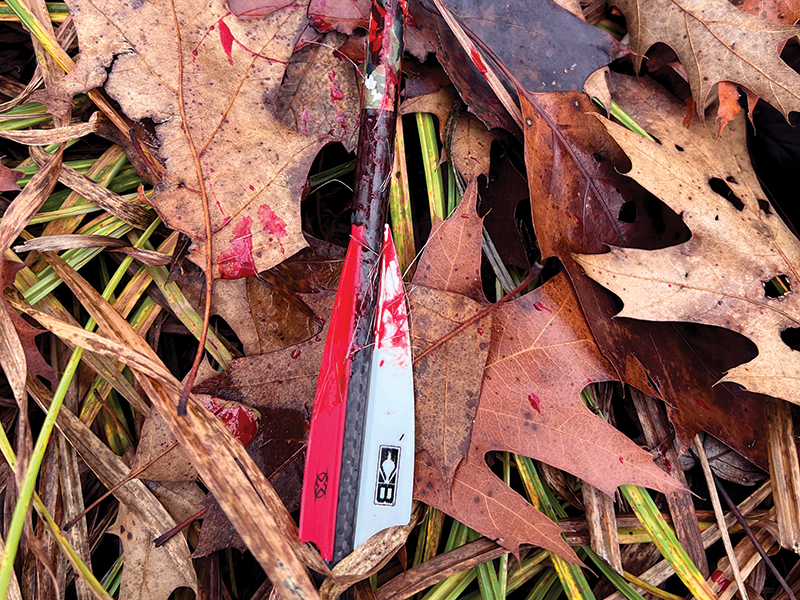Over the years, I’ve experienced some mind-boggling blood-trailing endeavors. Some have lasted for hours and a few carried on for days. Fortunately, those episodes have been few and far between. In fact, I’ve found the positive proof of what lies ahead in most blood trails is usually found within the first 50 yards of where the deer was shot.
You see, seldom does it require a lengthy blood trail and several hours of trailing to determine what kind of wound you are dealing with. An observant hunter can learn everything he needs to know a short distance ahead, such as how long to wait before he begins tracking, and precisely where the deer was hit.
However, before getting into obvious blood-trailing clues that will assist you most, let’s first take a look at the most palpable clue: the one that follows the shot.
Deer Reactions
Because seeing is believing, we can’t help but watch intently the moment we release an arrow. Moreover, what we see can provide evidence of a hit, miss, or the precise spot where we hit the deer.
Every time I release an arrow at a deer, I hope to see three things:
1. The precise spot the arrow hits.
2. The deer’s reaction to the shot.
3. The exact trail (or area) the deer travels as it flees.
It’s often difficult to witness all three, especially No. 1. If we follow through on the shot (the process of continuing to aim until the arrow hits), it diminishes the possibility of seeing exactly where the arrow hits. Therefore, we can only assume as to where the arrow hit the deer. We are often correct, but it only takes an inch to turn a great day into one you’ll never forget.
Most deer typically respond to being shot. There are exceptions, such as when my son John once shot a mature doe that merely ran a short distance, stopped, looked back and snorted. She then fell over dead. The arrow had passed through both lungs.
That was the exception and not the rule. Most deer will flinch or jump when hit with an arrow. Some will tear off at supersonic speed, while others might casually lope off as if to say, “All is well.”
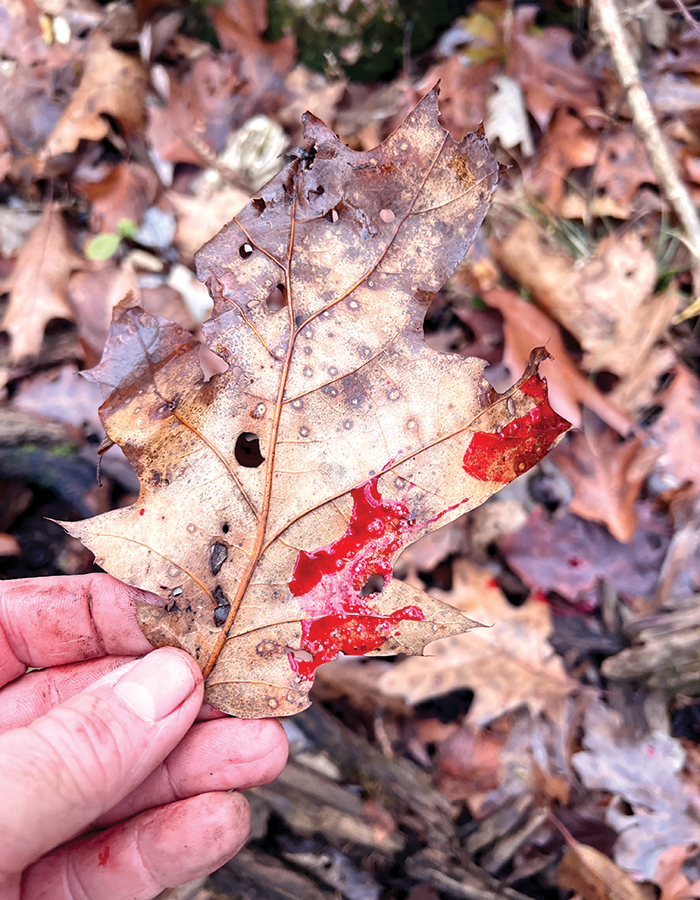
Some hunters believe that the harder a deer is hit, the more reaction it will display. Nothing could be further from the truth. I’ve watched deer with superficial wounds, primarily those hit in muscle and/or bone, tear out at break-neck speed, just as others do when shot through both lungs. Alternatively, most gut-shot deer, even though mortally wounded, seldom run hard. Most leave the scene slowly, and some appear hunkered with legs wide-spread as they walk. Some gut-shot deer also stop and stand within the first 50 yards. In fact, I’ve often made the decision to leave the scene and avoid looking for any blood or my arrow if I suspect I hit a deer too far back.
You must pay close attention to the direction the deer travels — even if you suspect a miss. I have assisted in tracking many wounded deer only to find it took an hour to find blood simply because we were not looking in the right direction.
The longer it takes to decipher the clues of the first 50 yards, the more disturbances you create. If you can choose a landmark, perhaps a certain tree the deer runs by, you are sure to be closer to finding blood at the onset.
First Blood
Blood is usually found within the first 50 yards of where a deer is shot. Even if you don’t locate it until farther away, you can usually bet that blood did reach the ground before the deer traveled very far. However, how quickly a deer bleeds externally, and how quickly you find blood, can help you determine where you hit the deer.
I usually start looking where the deer stood upon release of the arrow. Seldom is blood found in that location, but it does happen. Low hits are usually responsible for blood reaching the ground immediately. Many heart-shot deer bleed immediately, but so do deer with low-muscle wounds.
The speed in which the deer leaves the scene will determine how quickly you find blood. Most lung-shot deer, even those that react normally to this wound and run hard, will bleed externally quickly. Blood is usually found within 20 to 30 yards of where the deer was shot. Similarly, high muscle wounds and artery wounds result in blood reaching the ground within the same distance.
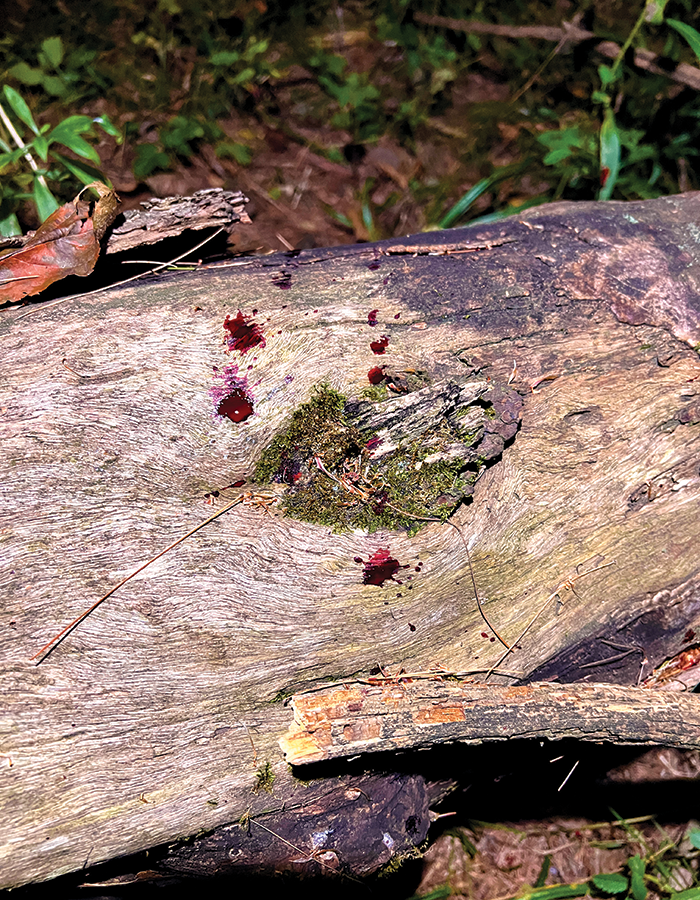
The exception is the gut-shot deer. Although the precise location of an abdominal wound, such as liver, paunch or intestines might deter the time it takes for blood to reach the ground, most bleed externally before they travel 50 yards. A liver-hit deer tends to bleed externally a little sooner than the stomach wound, while the paunch wound bleeds a little sooner than the intestinal wound. However, primary factors still apply, such as whether there is complete penetration, and how low the wound is located.
The location of the wound plays a role in whether or not the blood trail intensifies the first 50 yards. The fact is, a blood trail of a gut-shot deer might appear promising at first but take a turn for the worse long before the tracking ends.
Quantity of Blood
Although I’ve discussed how a low hit can result in blood reaching the ground immediately, keep in mind it could also produce a larger quantity of blood as the deer travels the first 50 yards. However, keep in mind that some blood trails will promptly change, depending on the precise location of the wound.
Let’s look at major artery wounds and what happens the first 50 yards. There are three primary blood vessels that can be hit even when vital organs are missed. They connect with the heart and are found in the neck — under the spine and in the hips. Wounds to major arteries usually result in a blood trail intensifying once it begins reaching the ground.
The blood trail of a lung or heart shot also intensifies once it begins. It might begin a few yards from where the shot was taken and gradually increase. Again, exceptions might apply, such as the angle and height of the shot. Surprisingly, though, it’s common for the blood trail of a muscle wound to intensify as a deer travels. Thus, you could find the blood trail easier to follow the farther you travel, which can easily be confused with the trail of a vitally wounded deer during the first 50 yards.
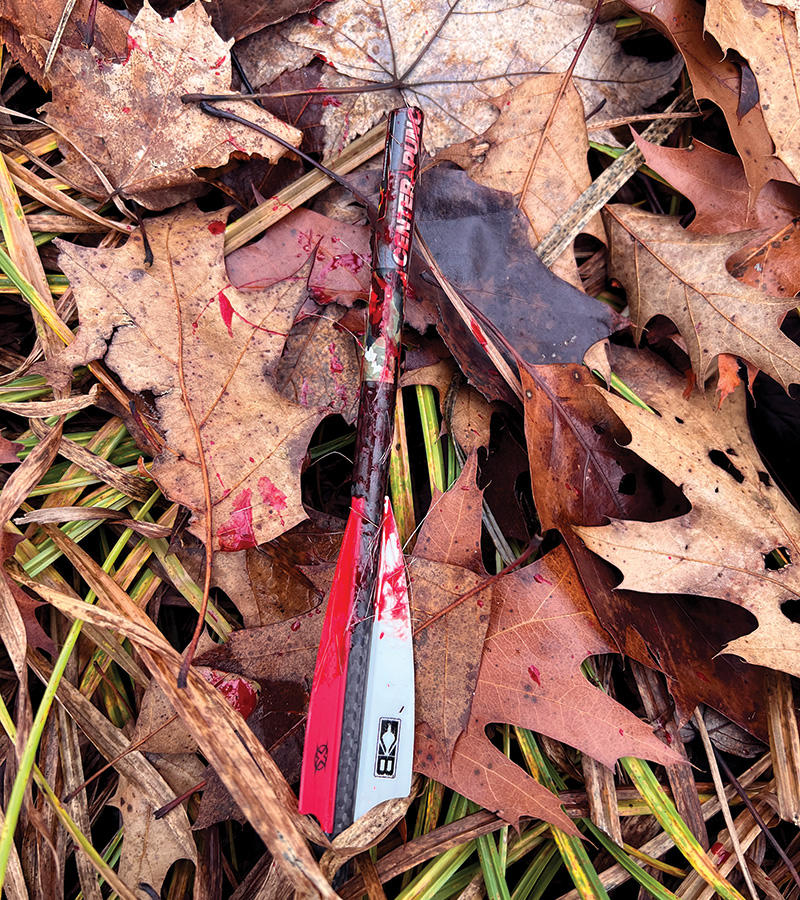
The blood trail of an abdominal wound might appear promising for a moment, but it often dissipates quickly. It’s common for tissue to clog even a low exit hole when a deer is shot through the abdomen. The lower the wound and the slower the deer travels, the better it is for the tracker. However, at some point the blood trail will usually worsen — or diminish — after the deer travels 50 yards.
Bright vs. Dark Blood
Although you could have an idea of the wound without taking notice to the darkness or lightness of the blood you find, be aware that color can provide positive evidence.
Different wounds can result in blood of various shades of red. Most lung-shot deer leave bright-red blood, but so do muscle wounds. The blood of arteries and heart wounds appear similar, except slightly darker — more of a crimson, or cherry red. I will readily admit that highly experienced blood-trailers can identify blood color with great accuracy, but it’s still possible to confuse the colors of bright red and cherry red.
Dark-red blood is usually an indication of a gut-shot deer. It sometimes is considerably dark. There is some variation in the blood of a liver, stomach or intestinal-shot deer, but make no mistake that all three wounds result in dark red blood. The liver is a very dark-red organ. It’s also true that stomach and intestinal contents cause the blood to appear dark.
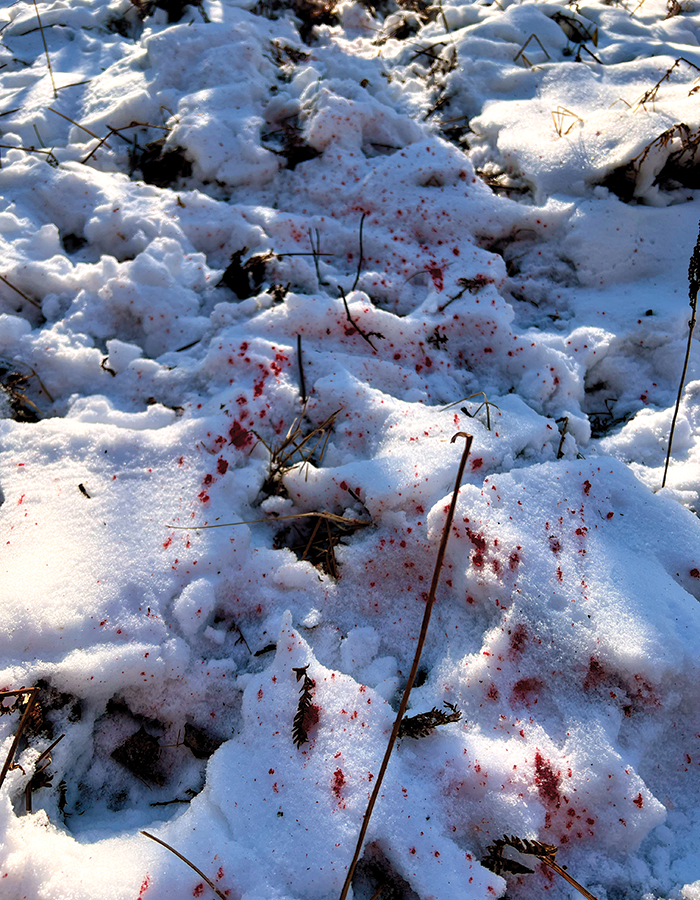
Nonetheless, the longer any blood is on the ground, the darker it appears, particularly after it dries. Soil and some types of vegetation might also cause blood to appear darker, which could confuse your attempt to decipher the wound. However, the blood you find the first 50 yards will probably not have dried if you are searching a short time after the shot.
For this reason, I like to evaluate blood not long after the shot. I’m perfectly happy to wait 20 to 30 minutes; then quietly ease over to the shot location and analyze the situation. That is providing I am not aware of hitting a deer too far back. If I locate dark blood and then become aware that I’m coping with an abdominal wound, I promptly and quietly leave the scene to delay tracking for several hours. Most paunch-shot deer will bed if left alone. I also know that the farther I have to track the animal, the more difficult the recovery could become.
Summary
It’s amazing how much evidence is found within 50 yards of where a deer is shot. A wounded deer can travel that distance in less time than it takes you tell about it, yet it leaves behind positive evidence that can help the hunter make prudent tracking decisions.
What is perhaps most intriguing is the first 50 yards provides future instructions for the tracker. Yes, there are times when I don’t learn everything I need to know until I have tracked a deer a considerable distance.
However, more often than not, I’m able to answer the most important questions during the first 50 yards.
Where did I hit the deer?
Do I track now, or wait?
What lies ahead?
What are my chances of recovery?
The chance of getting answers to any of these questions makes me treat my approach to the first 50 yards with utmost care. I’m one of those bow-hunters who prefers to play it safe rather than ask “what if” after botching the task at hand.
— John Trout Jr. was a longtime D&DH contributor from Illinois. He also authored the critically acclaimed book Finding Wounded Deer, which can still be found on the secondary market.

